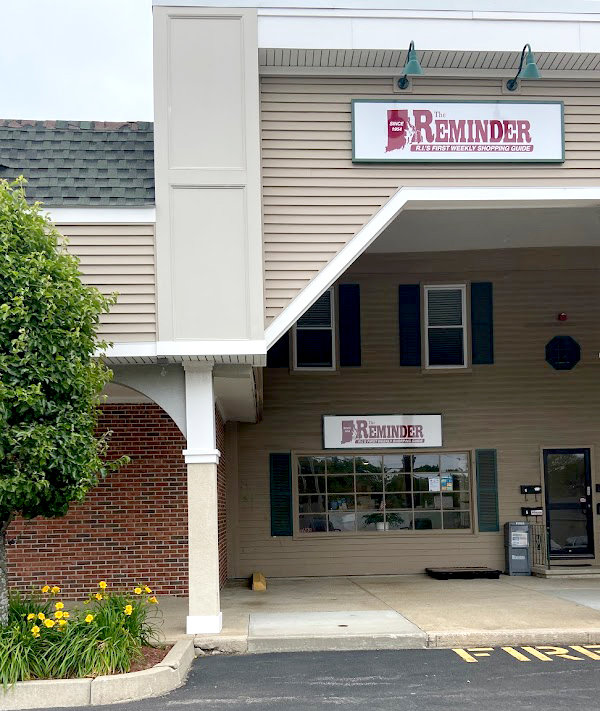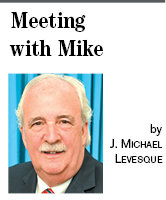RHODE ISLAND HERITAGE SERIES
How a Rhode Island runner added ‘Heartbreak’ to a Boston hill
This monthly series features a member of The Rhode Island Heritage Hall of Fame.
Ellison (Tarzan) Myers Brown got off to a fast start in the 1936 Boston Marathon until John Kelley …
This item is available in full to subscribers.
Attention subscribers
We have recently launched a new and improved website. To continue reading, you will need to either log into your subscriber account, or purchase a new subscription.
If you are a current print subscriber, you can set up a free website account by clicking here.
Otherwise, click here to view your options for subscribing.
Please log in to continue |
|
How a Rhode Island runner added ‘Heartbreak’ to a Boston hill
This monthly series features a member of The Rhode Island Heritage Hall of Fame.
Ellison (Tarzan) Myers Brown got off to a fast start in the 1936 Boston Marathon until John Kelley caught him on a hill at the 20-mile mark. Kelley overtook him at the last of the Newton hills, a gradually rising slope near Boston College. Passing Brown, Kelly patted him on the back. The gesture was ill-advised. Brown sped up, and Kelley could not keep up. Jerry Nason, a newspaper reporter, named the spot “Heartbreak Hill,” suggesting that “Tarzan” broke Kelley’s heart there. This famous site is now marked by a statue with two figures called Young at Heart. Both figures are of Kelley as a young and older man, while Brown, the winner, is missing.
His victory in the Boston Marathon won him a place on the 1936 U.S. Olympic team for the Berlin Summer Olympics. Brown suffered severe cramps, forcing him out of the race. After returning to the United States empty-handed, he tried to redeem his reputation by claiming he could run and win two marathons within 24 hours. In the fall of 1936, he delivered on his boast, winning marathons on back-to-back days, first in Port Chester, N.Y., on October 11, and in Manchester, N.H., the following day. In 1939, Brown reached the pinnacle of his career, winning 20 of 22 long-distance races, setting records in nearly every event! In a ten-mile race in Cranston, Rhode Island, he equaled the world record of Pavlo Nurmi, the Flying Finn, perhaps the greatest long-distance runner ever. Brown won the Boston Marathon again on a chilly day in April 1939. In doing so, he eclipsed the race record by more than two minutes.
Brown was born on September 22, 1913, at Porter Hill, R.I., a leading family member on the Narragansett Nation’s Rhode Island reservation. He was the son of Narragansett tribal members Bryan Otis and Grace Babcock Brown. According to stories, the nickname “Tarzan” was given to him because he was a natural outdoorsman, swinging from tree to tree. Outside of running, Brown’s life was filled with hardship and disappointment. He grew up in extreme poverty with six siblings, three brothers and three sisters. Although a fisherman and a mason by trade, Brown was unemployed for long periods. His formal schooling ended in the seventh grade. He hoped that his skills as an unpaid amateur athlete would open doors and provide employment during the hard times of the Great Depression. That did not occur. In financial trouble for much of his later life, he was forced to sell his prized medals and trophies to pay for groceries and medical bills. Brown married a Narragansett woman named Ethel Wilcox and had four children. The economy in these depression times provided little for most Americans and nothing for Indians. They were a conquered people living on the margin. Ellison Myers Brown, born on the margin, saw running as his only way out of poverty.
Many varied accounts of the events on the evening of August 23, 1975, which led to Brown’s death, have been told. Some state that he was in the wrong place at the wrong time, waiting for a ride home, or that an altercation may have occurred. However, amidst whatever confusion and circumstances there may have been, he was killed when a van hit him outside a Westerly, Rhode Island, bar, and his injuries proved to be fatal. There is an annual Mystic River road race named in his honor in Mystic, Connecticut, every fall as part of a conference commemorating past Native American runners of the Boston Marathon and acknowledging the history and significance of running in many Indigenous American cultures.
Ellison M. Brown was inducted into The Rhode Island Heritage Hall of Fame in 1968. In 1973, he was inducted into the National Indian Athletic Hall of Fame in Lawrence, Kansas.
Mike Levesque is a director of the Heritage Harbor Foundation.
Keywords
Tarzan, marathon








Comments
No comments on this item Please log in to comment by clicking here